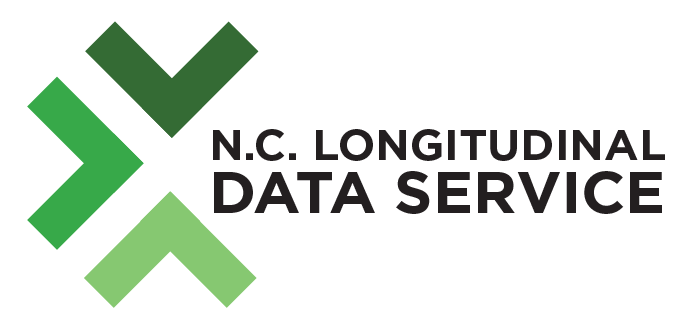Review & Transmission Process for On-Request Datasets
Review Process
There is no request review process for already-approved and publicly-posted aggregated datasets.
The request review process for custom aggregated data or record-level data is a multi-step process with several checkpoints designed to ensure preservation of data privacy and security. As a result, Data Requesters should be aware that the process sometimes can take months to complete in order to honor NCLDS’s commitment to these standards.
Our Data Request Tracking Dashboard displays regularly updated information about the requests submitted to NCLDS and the time it takes to complete those requests.
Because NCLDS’s first responsibility is to provide timely data to help address the needs of the state, NCLDS reserves the right to prioritize the order in which requests are fulfilled, should the number of active requests exceed NCLDS’s capacity to process those requests. At such times, the NCLDS Board has approved a policy that prioritizes requests for data from elected officials and state agencies that contribute data to NCLDS. When the demand requires that NCLDS invoke the prioritization policy, all other requests will be addressed in the order in which they are received after fulfillment of the priority requests.
There are five major steps in a typical review of a request for a custom or research-ready dataset:
Protection of data privacy and security informs all NCLDS products and services. As a result, every request for data begins with a determination of the legal eligibility of the Data Requester to receive the data requested. A Data Requester can appeal a decision of non-eligibility.
Once eligibility is established, the request is shared with the Contributors that manage the specific data included in the request.
NCLDS does not own or manage the data it prepares in response to requests. As a result, NCLDS determines which Contributors are responsible for the data requested and routes the request to each of those impacted Contributors. If the request is not approved by one or more of the impacted Contributors, a Data Requester can modify the Data Request Form and resubmit.
Once a request is approved by all impacted Contributors, the amount of time necessary for NCLDS to prepare the data will depend on the breadth of the approved request and the complexity of the matching required to fulfill the request.
Once NCLDS has prepared the data package, the Contributors who provided data for the request review the package. This final review process is critical for ensuring that all privacy and security requirements have been met.
Before an approved dataset can be transmitted to a Data Requester, a Privacy Threshold Analysis and Security Check must be completed, and all parties must complete and sign a Data Use Agreement and any additional agreements and forms required by individual Contributors (based on each Contributor’s own data governance structure and statutory obligations). The amount of time necessary for NCLDS to manage completion of this step will depend on the breadth of the approved request and the complexity of the rules and laws governing different components of the full request.
Each Data Use Agreement will be unique to reflect the specific guidelines and requirements that apply to data in each request, but Data Requesters can preview a template Data Use Agreement using the link above.
Once all legal documents and forms have been completed by all parties, NCLDS will follow a privacy- and security-forward process for making the requested data package available to the Data Requester.
Once a Data Requester receives and inspects the data package, the Data Requester can request EITHER a) corrections to any errors not identified during the review process; OR b) additional data element(s) if, upon receipt, the Data Requester discovers that a requested element is only usable with inclusion of another element (Contributor also can recommend inclusion of additional elements based on the Data Requester’s proposal, during either Contributor Review step above). Please note that any such requests made after transmission of the data package will require verification of destruction of the original data package and also may require repetition of some or all of the steps outlined above, based on the nature of the correction request.

